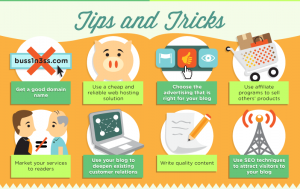
To truly reap the benefits of performance marketing, you must look beyond its application to paid activities alone.
Between unpredictable market dynamics and a looming recession, marketing budgets are shrinking. But the need for it and expected outcomes from it continue to grow significantly. As marketers, we all face a common challenge: How do we do more with less? Well, you put money where the results are. Performance marketing as a methodology is designed to achieve just that. You monitor your channels, identify which of them drive the most customer conversions, and optimize them to maximize ROI.
This methodology, however, has predominantly reserved for paid channels. It is rarely covered in the context of organic search which, by its very nature, has a lower cost of acquisition maximizing ROI. Additionally, by the virtue of the intent that motivates keyword choice, it also generates a higher quality of leads.
This blog covers the many ways the impact of SEO expands beyond cost of acquisition and how to develop an effective strategy.
Impact beyond cost of acquisition
The unique advantage of SEO is that it can be designed to achieve multiple business goals besides lead generation, at the same time. The below three encompass the three major ones businesses must prioritize to thrive in today’s market.
Expand market reach
With a limited budget, paid efforts have to be focused on bottom-of-the-funnel narrowing the target pool. Organic efforts, which as the name states, don’t share this limitation.
Let’s say you have a $ 5000 available of a campaign. Whether you’re running an organic or paid campaign, you need to create a landing page: the cost of creating copy, design, and developing it stands. Let’s say that’s a $ 100, leaving you with $4900 to promote it.
For a paid campaign, depending on your industry’s conversion rate & average CPL, your reach is limited to the keywords targeted or the number of people that fall into your specific criteria. However, with SEO you can create more promotional content for a fraction of the remaining spend, and optimize them to support ranking efforts. Assuming you rank amongst the top three positions, you’re likely to attract the attention of 75% of your target audience. The math speaks for itself.
Align with intent
Intent-based targeting adds a layer of relevance. Not only does it allow to you to attract your ideal customer, but it also allows you to find them based on their current stage in the buyer’s journey. By combining audience data with behavior, you can develop a keyword strategy that follows them along their journey.
Drive demand
The reason demand generation extends beyond lead generation is that it combines it with brand recognition and trust building. It’s ability to expand reach and align with intent beyond bottom-of-the-funnel, give your audience everything they need to not only recognize you, but also seek you out when their need fits what you offer.
It also presents you with the unique opportunity to create demand by aligning a more niche solution with customer needs.
But you need to rank among the top three results to see tangible results; and that means executing the right SEO strategy. But how do you figure out the right strategy for you?
How to develop an effective SEO strategy for performance marketing
Every SEO strategy has four foundational pillars.
• The right keywords for your business. Keywords that your customers are likely to use as they search for information, consider different solutions, and decide on who to work with.
• Content that is relevant, helpful and compelling, i.e., content that is human.
• Content that is optimized for search engines, i.e., content that increases the chances to search engines prioritizing it.
• Domain authority. Where do you stand in comparison to your competition? How much do you need to boost your score with high value back links to level the playing field.
To build the right SEO strategy for your business, you need to assess all your website and content for all the above elements. The next step is to build and execute a plan that will ensure you rank better than your competition.
Way forward
As you move ahead with your initial plan, your progress will reflect across various KPIs like traffic, engagement, goals and events you set up, and more. Monitoring these KPIs are key to ensuring that you evolve your strategy to meet your needs in the moment. The first plan was only your first step to success. Sustaining it, is a journey.
About the Author: Wisam Abdulaziz
The post SEO for Performance Marketing: You Can’t Afford to Ignore It appeared first on Search Engine People Blog.
(4)







